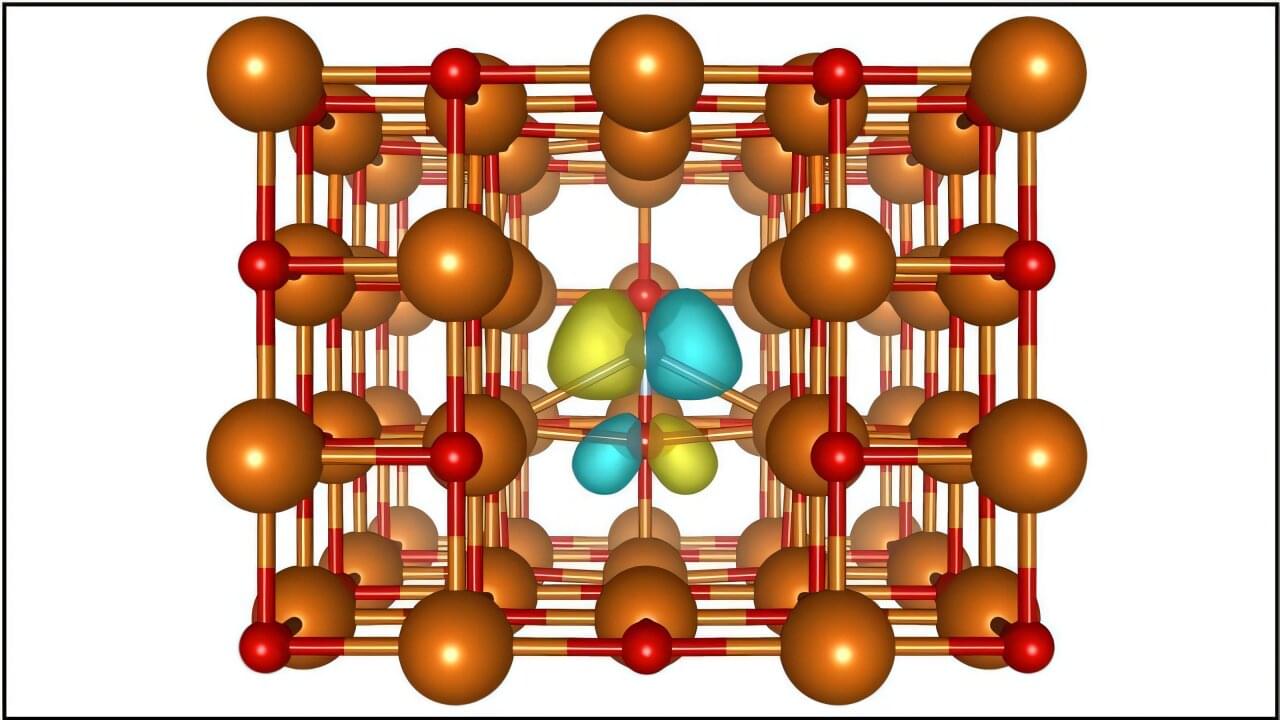Harvard engineers have built a chip-thin metasurface that replaces entire quantum optical setups.





A groundbreaking study from the Universities of Barcelona and Padua challenges the inflation theory, suggesting the universe began from a stable De Sitter space, driven by gravity and quantum mechanics alone. This model explains the formation of cosmic structures through quantum fluctuations evolving into gravitational waves, offering a simpler, testable alternative to the Big Bang’s fiery start.

Used as a versatile material in industry and health care, magnesium oxide may also be a good candidate for quantum technologies. Research led by the U.S. Department of Energy’s (DOE) Argonne National Laboratory and published in npj Computational Materials reveals a defect in the mineral that could be useful for quantum applications.
Researchers are exploring possible building blocks, known as qubits, for systems that could exploit quantum properties. These systems could operate in various devices that may outperform classical supercomputers, form unhackable networks or detect the faintest signals.
Unlocking the potential of qubits for applications such as quantum computing, sensing and communications requires an understanding of materials on the atomic scale.

In a fascinating dive into the strange world of quantum physics, scientists have shown that light can interact with itself in bizarre ways—creating ghost-like virtual particles that pop in and out of existence.
This “light-on-light scattering” isn’t just a theoretical curiosity; it could hold the key to solving long-standing mysteries in particle physics.
Quantum light: why lasers don’t clash like lightsabers.
Jess Wade explains the concept of chirality, and how it might revolutionise technological innovation.
Join this channel to get access to perks:
https://www.youtube.com/channel/UCYeF244yNGuFefuFKqxIAXw/join.
Watch the Q&A here (exclusively for our Science Supporters): https://youtu.be/VlkHT-0zx9U
This lecture was recorded at the Ri on 14 June 2025.
Imagine if we could keep our mobile phones on full brightness all day, without worrying about draining our battery? Or if we could create a fuel cell that used sunlight to convert water into hydrogen and oxygen? Or if we could build a low-power sensor that could map out brain function?
Whether it’s optoelectronics, spintronics or quantum, the technologies of tomorrow are underpinned by advances in materials science and engineering. For example, chirality, a symmetry property of mirror-image systems that cannot be superimposed, can be used to control the spin of electrons and photons. Join functional materials scientist Jess Wade as she explores how advances in chemistry, physics and materials offer new opportunities in technological innovation.
–


